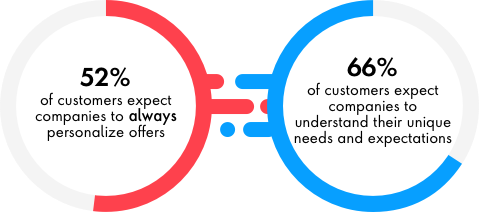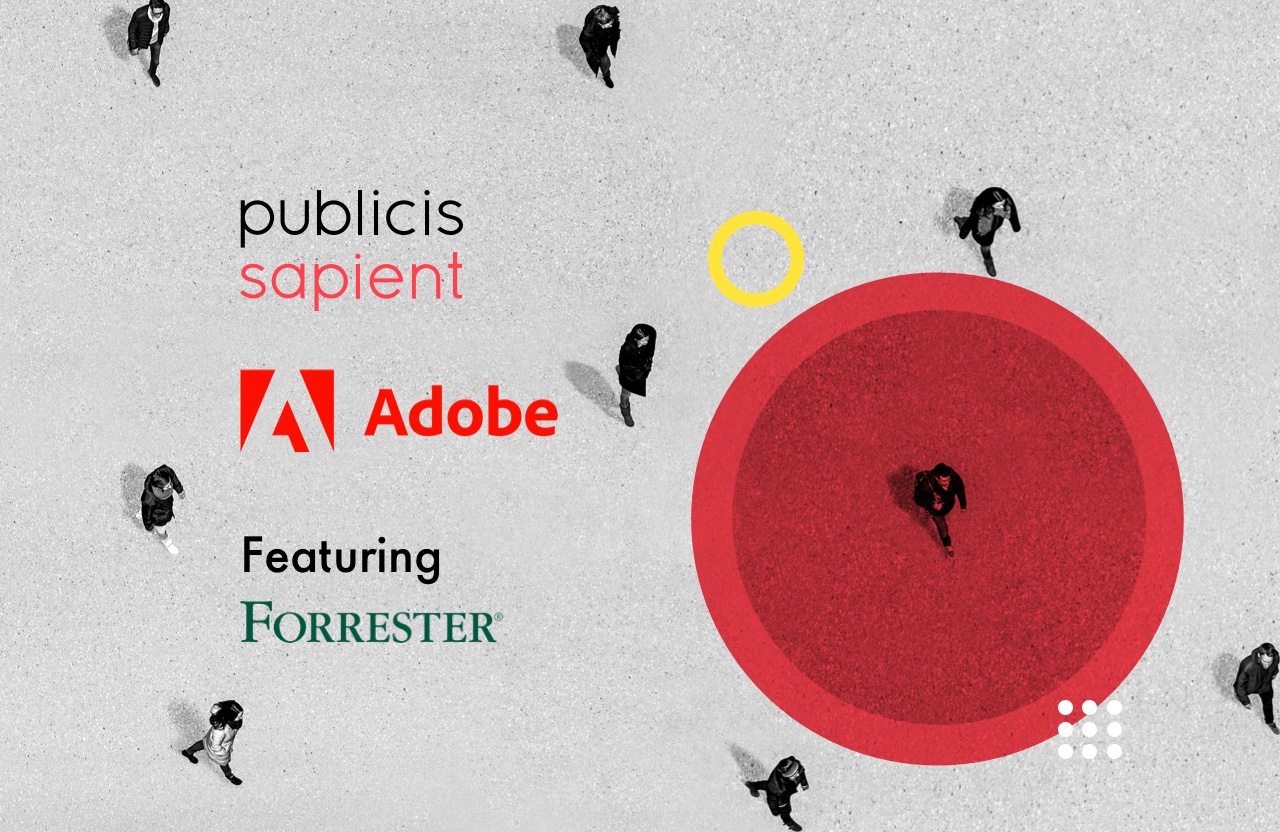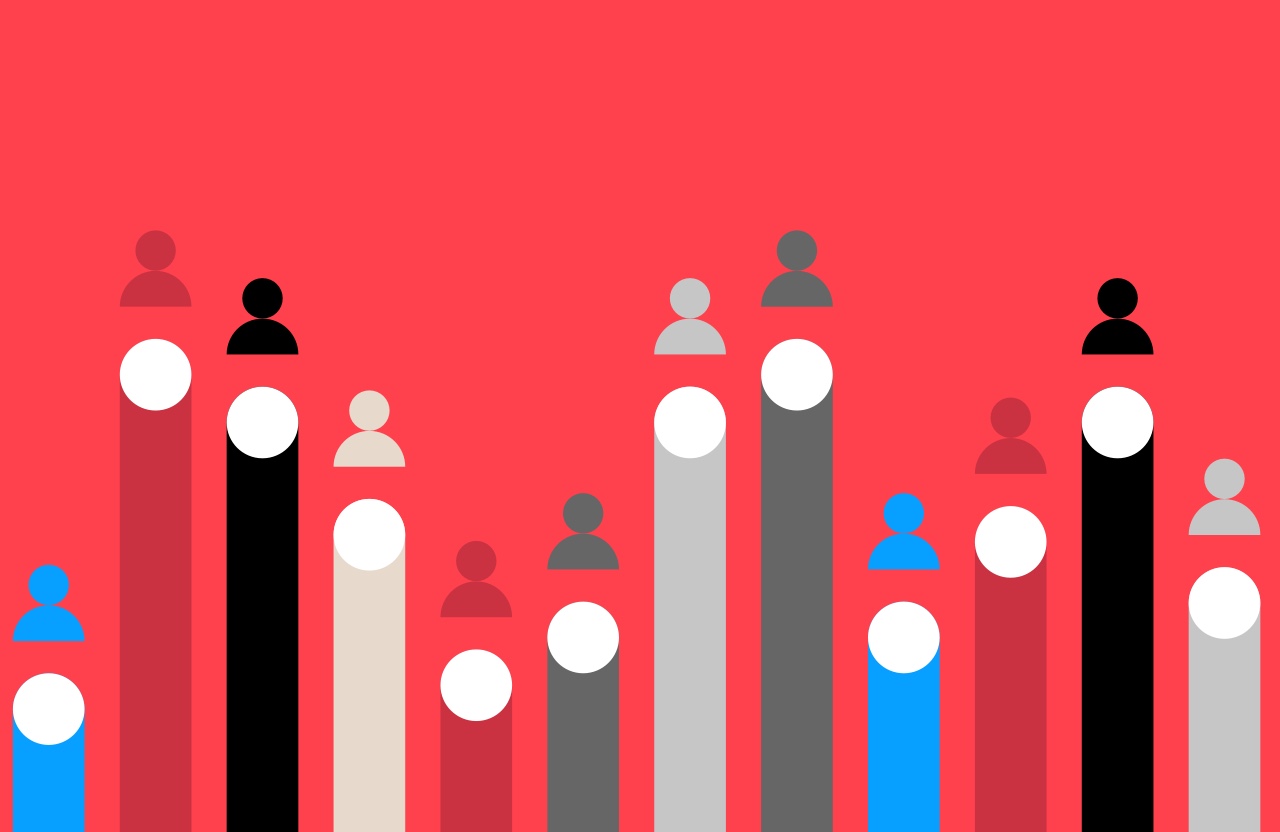What issue can we solve for you?
Type in your prompt above or try one of these suggestions
Suggested Prompt



Insights
How Banks Can Use Hyper-Personalized Digital Acquisition Strategies to Drive Growth
How Banks Can Use Hyper-Personalized Digital Acquisition Strategies to Drive Growth
In today’s experience economy, customers expect banks to know their needs, engage them based on their context (life events, life stage and lifestyle), tailor offers and provide a frictionless path to purchase. New technologies and techniques have emerged to help financial institutions crack the code on hyper-personalized acquisition by understanding customer’s digital DNA.
The customer perspective
Customer adoption of digital technologies is exponentially increasing since the onset of the COVID pandemic. In today's experience economy, customers expect banks to know and understand them. In a survey conducted by Salesforce in Oct 2021, two-thirds of the customers said that they expect companies to understand their unique needs and expectations.
Source: * Salesforce – Trends in FS 2020
-
But many FS institutions continue to drive a non-personalized approach to customer engagement resulting in low conversion rates. Customers are annoyed receiving irrelevant offers and communications about products they don’t care about.
At the same time customers value offers that are relevant to their context and help them with their needs.
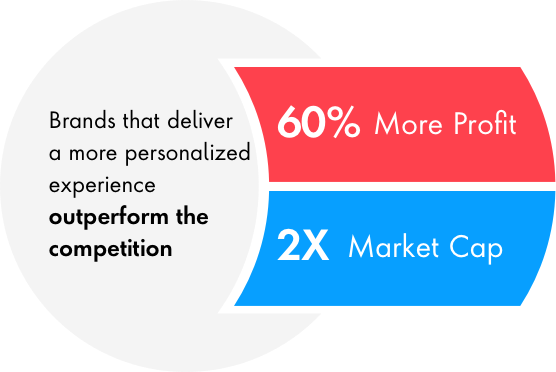
Customers’ growing desire for personalized bundled services with banking products
There is also a growing desire among customers to get bundled services with banking products that is aligned with their interest. According to research from Cornerstone Advisors, roughly three out of ten consumers say they would open a checking account with Amazon that was bundled with other services (e.g., cell phone damage protection, ID theft protection and roadside assistance). They are even willing to pay $5 to $10 a month for the bundled offering. Consumers would switch banks for a checking account bundled with services that help them save money, add convenience, and offer protection for an additional $5 to $10 monthly fee. The survey also asked what add-ons would entice consumers to switch banks. The highest response was media services like Netflix (40 percent), followed by smartphone insurance (28 percent), utility services (24 percent), travel insurance (19 percent), air travel miles (13 percent) and ride hailing service (10 percent).
Bank account bundle preference with
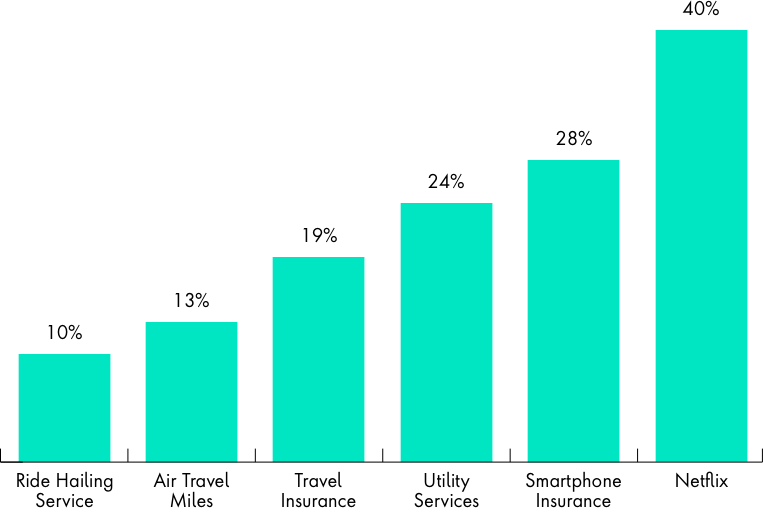
Another survey found that a near majority of the consumers aged 18 to 34 years, are willing to share their data with third parties/services to be able to receive better bundled banking products.
For banks to be able to engage customers with value propositions that resonate with them, they not only need to know customers behavior with banks but also their preferences, psychographics and behaviors outside of banks to be able to tailor bundled offers.
The marketer’s complication
Marketers face several challenges that currently prevent them from achieving the desired levels of personalized customer engagement, like:
- Identity: Fragmented view of the consumer across devices and channels
- Profile: Difficulty capturing, storing and categorizing online and offline data for a complete view of the consumer
- Message relevance: Can't deliver individualized communications across channels at scale
- Measurement: Difficulty demonstrating accurate closed-loop measurement, attribution and media efficiency
To delivery personalized engagement to customers, marketers need to answer these key questions:
-

ATTRACT
Who to target?
What are the customer segments? What is their worth?
How to target?
SEO, paid search, media, owned etc.
With what content?
What are their needs? What value proposition? What information/products/offer/ bundles?
Who to contact?
Most opportunity time/moment to contact

ENGAGE
How to get prospect to start engagement?
What nurturing journey?
Including digital self-service, human assisted digital, offline orchestration
With what content?
Next best content - insight/ information/education/offer/ CTA
Via what channel?
Email, SMS, call etc.
When to contact?
Most opportunity time/moment to contact

CONVERT (path to purchase)
What buying journey?
Including digital self-service, human assisted digital, offline orchestration
How to re-engage lost prospect?
Nurturing journey (digital, human), re-targeting etc.
How to increase lending while reducing defaults?
The solution
New technologies and techniques have emerged to help financial institutions crack the code on hyper-personalized acquisition by understanding customer’s digital DNA. At the core of our solution at Publicis lies a series of interconnected strategies and initiatives across the lifecycle that enables a Digital Customer DNA, defines value proposition (including bundles), identifies customers with the highest intent based on first and third party data, and enables a frictionless path to purchase for customers across digital devices and human connected channels. It also includes executing nurturing customer engagements to get dropped off customers back on the journey.
Series of interconnected strategies and initiatives to improve acquisition and realize value

1. Product (/bundle) value proposition:
- Conduct quantitative and qualitative research to identify product (and/or bundle) value proposition.
- Use a third-party customer database like Epsilon, which captures demographics, psychographics, lifestyle, interests, hobbies, propensity and financial habits to understand customer needs and micro-segment them.
- Extend this learning with social media listening and analytics to understand customer segment preferences, likes, dislikes, unmet needs, and more.
- Conjoint analysis is extremely helpful in providing insight into how customers prioritize different needs. Set up digital conjoint analysis questionnaires (via Qualtrics and other tools) and administer them to recruited participants who meet the criteria for the customer segments.
- Supplement the quantitative research with qualitative ethnographic research.
2. Customer segmentation and audience selection:
Accurately identifying people drives everything. Create a digital identity solution that ties customer data across devices and sites. Develop a deep understanding of the customer employing digital identify and third-party customer databases to gain insights of customers like:
- Who am I: Demographics and lifestyle
- What I buy: Online and offline purchases
- What I watch: Broadcast and digital consumption
- What I browse: online interactions
- Where I go: Location and proximity intelligence
- How I connect: cross-device information
Conduct micro-segments modelling to identify high propensity audience and value-pool analysis to identify segment’s worth.
3. Lead generation vehicle activation and measurement:
Use customer intelligence and real-time decisioning to activate across paid search, paid / owned social media and affiliate sites and gain a closed loop measurement of the effectiveness of each of these vehicles.
4. Lead nurturing and drip campaign:
- Get prospects to engage with you using content that speaks to their needs and context. Optimize the landing page and provide clear CTAs.
- Employ marketing automation platforms like SFMC/Adobe to create event driven journeys.
- Employ a personalization engine to determine the next best content for the prospect based on their actions with your online and offline channels, preferences, outside shopping behavior, etc.
- Personalize the content journey depending on where the visitor is clicking from (e.g., affiliate site, search engine, direct to the website, etc.)
- Know when customer is physically and mentally available for contact and reach at the right time via right channels using customer availability AI, this is especially relevant when an offline phone contact is required as part of the nurturing journey.
5. Frictionless data-driven path to purchase:
- Redesign website and customer journeys using human-centered design.
- On an ongoing basis conduct data driven optimization (DDO) and experimentation - Use a measurable approach to rapid and iterative experimentation and ongoing optimization enabling your bank to learn, make decisions faster and confidently, and compound on improvements over time. Data-driven optimizations range in type and size (e.g., new features, CTAs, value props, pricing, page flow, forms, navigation and templates).
- Experience leaders employing DDO showcase three common trends:
- Ability to derive customer insights from data
- Ability to react and act quickly
- Ability to innovate through experimentation
In 2016 when Netflix CEO Reed Hastings was asked where he sees Netflix in five years, he said, “We really don’t know. It's not Netflix that's making the changes. It's the internet. We're figuring out every year how to use the internet to make a great consumer experience. Every year is an experiment.”
- Enable human connected digital experience with chat, co-browse to intervene when visitor is detected to drop out from your website. Using human chat/co-browse has shown to recapture 10 to 20 percent of the likely digital funnel drop out candidates.
Even with a best-in-class experience, some drop-offs are inevitable, so re-engagement campaigns must be data-driven, personalized and hyper-relevant.
- Effectively re-engaging customers who drop off the funnel is essential to improving conversion and requires robust data collection, automated personalized campaign activation and thoughtful content
- Drip campaigns should be tailored to where in the funnel a visitor drops off and what we know about them (through data collected, visit behavior and personal profile)
- The closer to the top of the funnel a customer is when they drop, the more the campaign should focus on digital intervention. The closer the customer is to the bottom of the funnel, the more the campaign should focus on human intervention. Of course, there are always exceptions for high value customers with complex needs that require human intervention to close.
6. AI-led alternate data credit decisioning:
When it comes to lending, banks have predominantly relied on FICO scores which are backward looking and don’t provide a good assessment of a willingness and ability to repay. A large segment of the underbanked segment is the USA does not have a long enough credit history for FICO. But many of these individuals are credit worthy. Banks are leaving money on the table by declining credit to these customers based on FICO. Banks can use advanced forward-looking alternate data-based credit decisioning to maximize lending conversion while reducing defaults at the same time.
Business impact
Using a combination of the above-mentioned strategies we have driven measurable business outcomes for several FS clients, for example:
Related Articles
-
![]()
How Personalization Drives Impact
Personalization in consumer banking cannot just create a path to point consumers to the next product – it must embrace the customer holistically.
-
![]()
Five Emerging Trends in Consumer Banking
Over the next two years, the consumer banking landscape is poised for a seismic change. What do banks need to do to meet these new challenges?
-
![]()
When Banks Target New Customers, Personalization Is Paramount
Financial institutions can avoid wasting energy marketing to people at the wrong time by creating holistic views of potential clients.





